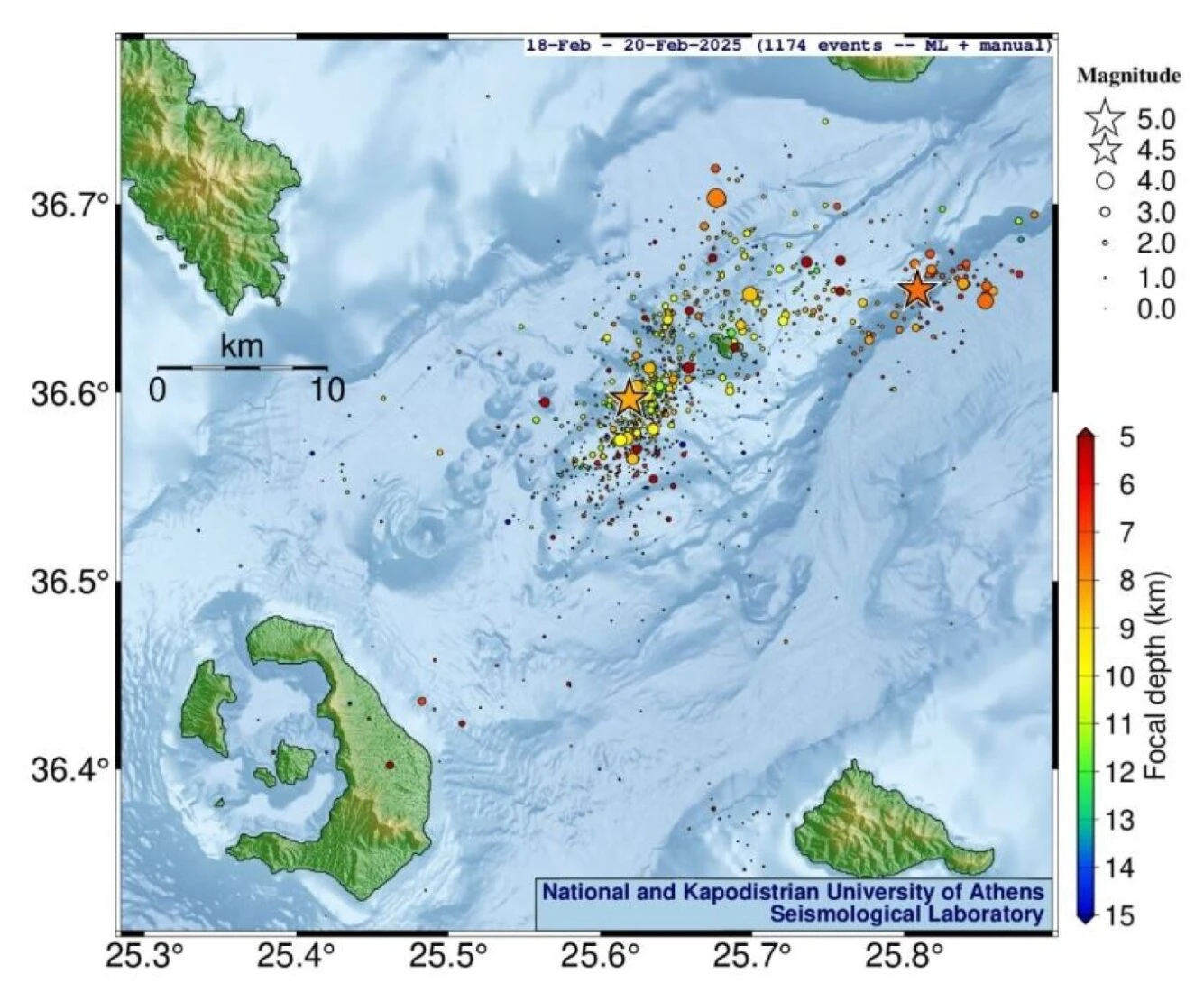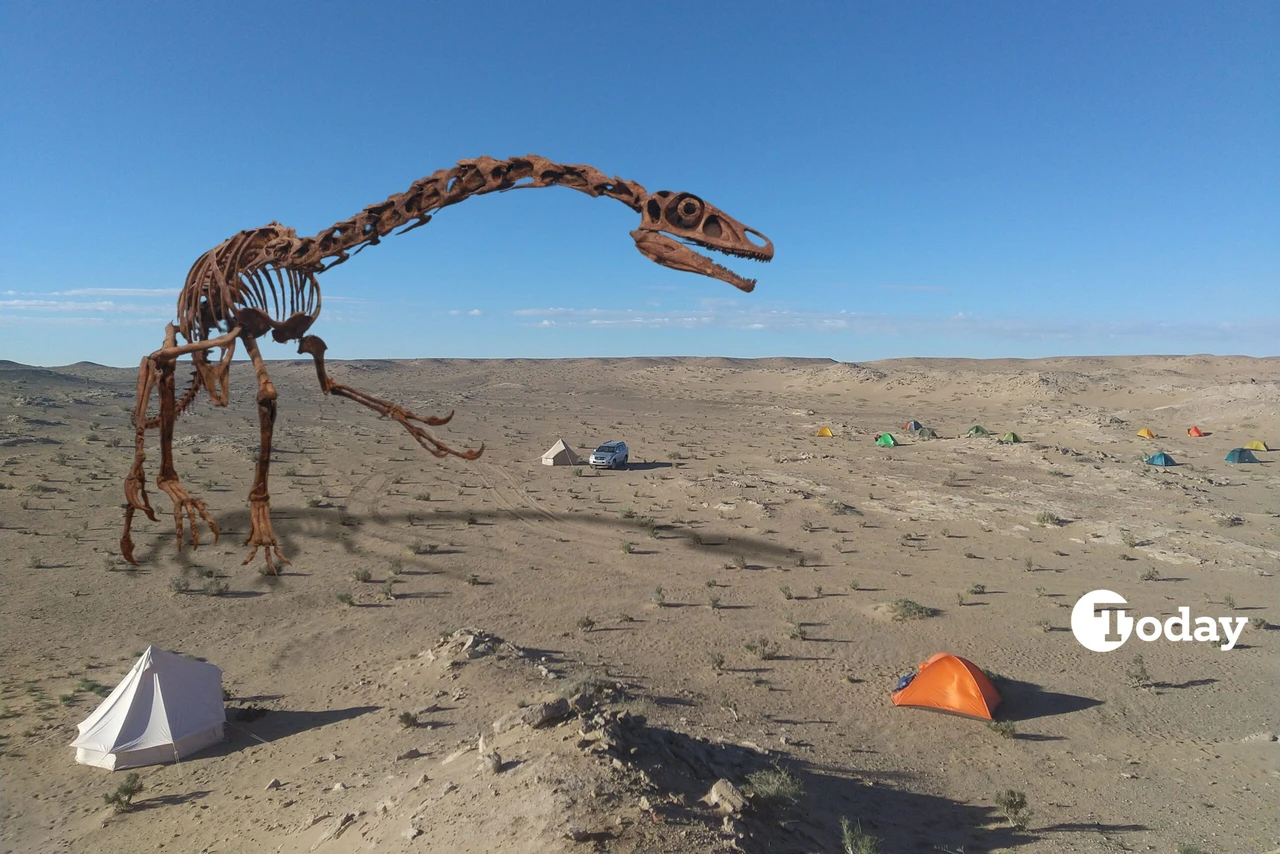Seismic activity in Santorini-Amorgos zone eases after 22,600 earthquakes
 People of Amorgos looking at the sea after the earthquakes, February 15, 2025. (Photo via AFP; Photo collage by Koray Erdogan/Türkiye Today)
People of Amorgos looking at the sea after the earthquakes, February 15, 2025. (Photo via AFP; Photo collage by Koray Erdogan/Türkiye Today)
According to the National Observatory of Athens (NOA), seismic activity between Santorini and Amorgos has been gradually declining, with no new microseismic burst detected since Feb. 15, 2025. Over 22,600 tremors have been recorded in the region between Jan. 26 and Feb. 19, 2025.

A recent map highlighting the earthquake activity in the Cyclades, specifically in Santorini, Amorgos, and Ios, on Feb. 18-19, offers more insight into the seismic events. The map visually demonstrates the distribution of tremors, with the size of the circles indicating the magnitude of each earthquake. Notably, tremors with magnitudes of 4.5 or higher are marked with stars, drawing attention to more significant events.
The color coding on the map reflects the varying focal depths of the earthquakes, providing additional context to their intensity and potential impact on the region.
Findings from national observatory of Athens
The Laboratory of Seismology (LS) at NOA has detected over 22,600 earthquakes in the Santorini-Amorgos zone using artificial intelligence techniques, ensuring high-quality results. Of these, more than 19,300 tremors had magnitudes greater than or equal to 1.0. On Feb. 18, over 600 tremors were recorded, including 37 with magnitudes of 2.5 or greater, and two significant quakes of magnitude 4.9 at 6:46 a.m. and 8:08 a.m. (local time). On Feb.19, there were more than 450 earthquakes, with the strongest measuring 4.2, recorded at 11:41:09 a.m. (local time) north of Anydros.
Despite this significant seismic activity, the overall trend points to a decline in both frequency and magnitude, with no further microseismic bursts after Feb. 15. The seismic cluster that emerged on Feb. 18, east of Anydros, where a magnitude 4.9 earthquake occurred, showed no substantial activity over the following days.

Insights into future of seismic phenomenon
The report also outlines likely scenarios for the seismic activity’s progression. According to the committee, the underwater volcano Kolumbo, located between Santorini and Amorgos, is not expected to erupt within the next 10,000 years.
Additionally, discussions regarding the emergence of a new volcano are considered speculative, with such an event potentially occurring in 200,000 years.

Recent developments and future monitoring
On Feb. 18, the Laboratory of Geophysics, led by Professors Yannis Alexopoulos and Vasilis Sakkas, successfully completed the preliminary phase of gravimetric measurements on Santorini and collected rock samples for density testing. A remeasurement of the non-permanent GPS/GNSS satellite stations on Santorini is expected to be completed soon. These efforts, along with ongoing seismic monitoring, will inform the next steps in understanding the region’s geodynamic phenomena.
The most likely scenario for the region’s seismic activity is continued de-escalation, as indicated by the overall reduction in tremor frequency and intensity.



